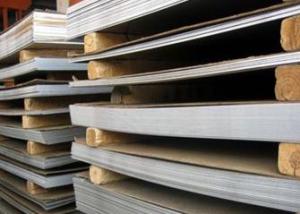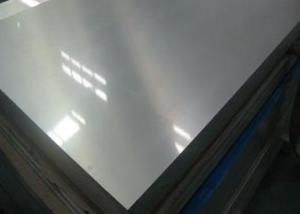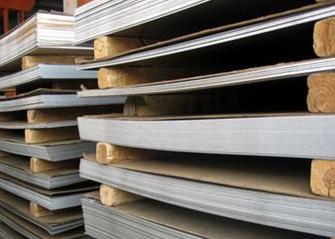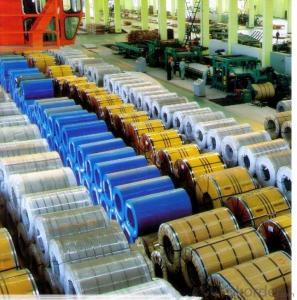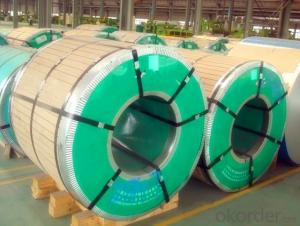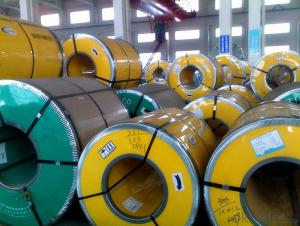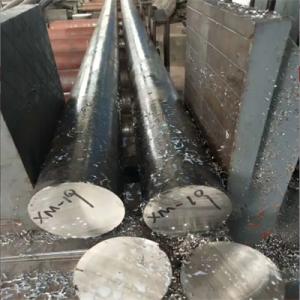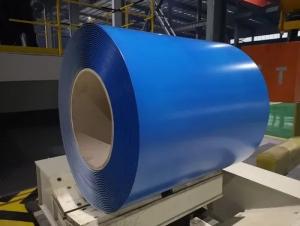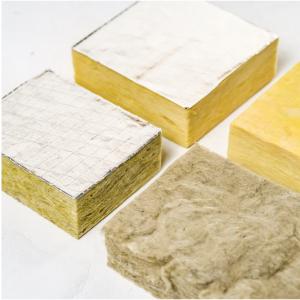Aisi202 Stainless Steel Strip of Steel Sheet
- Loading Port:
- China Main Port
- Payment Terms:
- TT or LC
- Min Order Qty:
- 1 Ton m.t.
- Supply Capability:
- 1000 Tons Per Month m.t./month
OKorder Service Pledge
OKorder Financial Service
You Might Also Like
202 stainless steel sheet
1. Chemical composition
|
C |
Si |
Mn |
P |
S |
Ni |
Cr |
|
max0.15 |
max1.00 |
7.50-10.50 |
max0.06 |
max0.03 |
4.00-6.00 |
17.00-19.00 |
2. Mechanical properties
|
Yield Strength |
Tensile |
Elongation |
Hardness (HV) |
Hardness (HRB) |
|
245 |
590 |
40 |
218 |
95 |
3. Standard: AISI, ASTM, GB, EN, DIN, JIS
4. Surface: 2B, NO.1, BA, NO.4, Hairline, SB, Mirror finish, Anti-skid, Cherkered etc.
5. Size: Thickness: 0.3-3mm (cold rolled), 3-40mm (hot rolled)
Width: 1000mm or 1219mm or 1240mm for cold rolled, 1500mm for hot rolled.
Length: As customers' request.
6. MOQ: 1 Ton
7. Payment terms: T/T or L/C
8. Packing: Seaworthy package with wooden or Iron pallets with the paper and the steel strip, or as customers' request.
9. Delivery time: Usually about 7 days after we confirming the order, or according to your quantity.
If you have any question or demand, pls feel free to contact me.
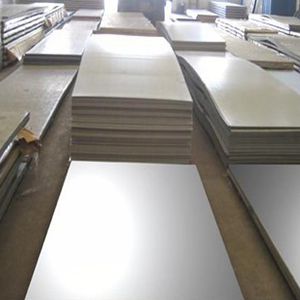
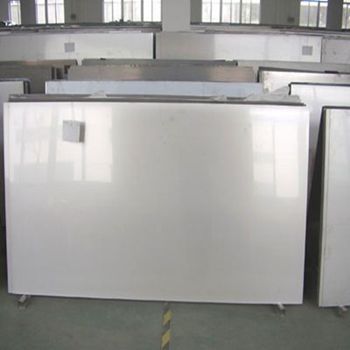
- Q:Can stainless steel strips be used in the petrochemical industry?
- Yes, stainless steel strips can be used in the petrochemical industry. Stainless steel is highly resistant to corrosion and can withstand high temperatures and pressure, making it suitable for various applications in petrochemical plants such as pipe fittings, heat exchangers, storage tanks, and process equipment. Additionally, stainless steel's durability and low-maintenance characteristics make it a preferred choice for petrochemical facilities.
- Q:What is the formability of stainless steel strips?
- Stainless steel strips are widely regarded as having good formability. Their excellent mechanical properties enable them to be shaped and molded into intricate geometries. This is due to their high ductility and low work hardening rate. Stainless steel strips can be easily bent, stretched, and molded into various shapes without any risk of cracking or breaking. However, it is important to note that the formability of stainless steel strips may vary depending on factors such as the specific grade and thickness of the material, as well as the processing conditions and techniques employed. When assessing the formability of stainless steel strips, it is crucial to take into account factors like composition, grain structure, and surface condition. In summary, stainless steel strips are often the preferred choice in industries like automotive, construction, and manufacturing, where good formability is of utmost importance.
- Q:What are the common thickness tolerances for stainless steel strips?
- The common thickness tolerances for stainless steel strips can vary depending on the specific requirements and industry standards. However, typical tolerance ranges for stainless steel strips are generally around +/- 0.005 to 0.010 inches or +/- 0.127 to 0.254 millimeters.
- Q:Can stainless steel strips be used for automotive suspension components?
- Yes, stainless steel strips can be used for automotive suspension components. Stainless steel is known for its high strength, corrosion resistance, and durability, making it a suitable material for various automotive applications, including suspension components. Stainless steel strips can be used to manufacture springs, brackets, and other parts that are essential for the suspension system. These components need to withstand heavy loads, vibrations, and exposure to various environmental conditions, and stainless steel's properties make it a reliable choice for such demanding applications. Additionally, stainless steel's resistance to corrosion ensures that the suspension components will have a longer lifespan, even in harsh conditions. Therefore, stainless steel strips are a viable option for automotive suspension components.
- Q:What are the weight and length options for stainless steel strips?
- The weight and length of stainless steel strips can change according to the particular necessities and specifications of the project or application. Different thicknesses, widths, and lengths are generally accessible for stainless steel strips to meet diverse needs. Light to heavy weight options are commonly available for stainless steel strips, with a variety of thicknesses and widths to choose from. Similarly, the length options can range from shorter lengths suitable for small projects to longer lengths for larger applications. To determine the specific weight and length options for stainless steel strips based on your requirements, it is important to consult with suppliers or manufacturers.
- Q:Can stainless steel strips be plated or coated with another metal?
- Yes, stainless steel strips can be plated or coated with another metal. This process, known as electroplating or coating, involves applying a thin layer of a different metal onto the stainless steel surface. This is often done to improve the appearance, corrosion resistance, or other properties of the stainless steel strips.
- Q:Can stainless steel strips be polished?
- Yes, stainless steel strips can be polished. Polishing stainless steel strips helps to improve their appearance by creating a smooth and shiny surface.
- Q:Are stainless steel strips suitable for solar panel mounting?
- Yes, stainless steel strips are suitable for solar panel mounting. Stainless steel is known for its durability, corrosion resistance, and strength, which makes it an excellent choice for outdoor applications like solar panel mounting. These strips can withstand harsh weather conditions, including high winds, rain, and snow, without corroding or deteriorating over time. Additionally, stainless steel provides a stable and secure base for solar panels, ensuring they remain firmly in place and can effectively capture sunlight for energy generation. Overall, stainless steel strips are a reliable and long-lasting option for solar panel mounting.
- Q:Are stainless steel strips suitable for architectural mesh?
- Yes, stainless steel strips are generally suitable for architectural mesh due to their durability, corrosion resistance, and aesthetic appeal.
- Q:What are the factors affecting the hardness of 111 stainless steel strips?
- There are several factors that can affect the hardness of 111 stainless steel strips. 1. Alloy composition: The chemical composition of the stainless steel, including the presence of various elements such as chromium, nickel, and manganese, can significantly impact its hardness. Higher levels of these elements generally result in increased hardness. 2. Heat treatment process: The heat treatment process plays a crucial role in determining the hardness of stainless steel. Processes such as annealing, quenching, and tempering can be utilized to manipulate the microstructure of the steel, which directly affects its hardness. 3. Cold working: Cold working, also known as cold rolling or cold drawing, involves deforming the stainless steel at room temperature. This process can significantly increase the hardness of the material by inducing dislocations and strain hardening. 4. Grain size: The grain size of stainless steel is another factor that influences its hardness. Finer grain sizes typically result in higher hardness due to the increased number of grain boundaries, which impede dislocation movement. 5. Presence of impurities: The presence of impurities in stainless steel, such as sulfur and phosphorus, can have a detrimental effect on its hardness. These impurities can promote the formation of non-metallic inclusions, which can reduce the material's hardness. 6. Work hardening: During the manufacturing process of stainless steel strips, work hardening can occur. Work hardening is the increase in hardness that happens as a result of plastic deformation. The level of work hardening depends on factors such as the amount of deformation, strain rate, and the initial hardness of the material. 7. Surface finish: The surface finish of stainless steel strips can also impact their hardness. Factors such as surface roughness and the presence of residual stress can affect the material's hardness by influencing the distribution and behavior of dislocations. It is important to note that the specific combination and interaction of these factors can vary depending on the manufacturing process, alloy type, and intended application of the stainless steel strips. Therefore, a comprehensive understanding of these factors is necessary to effectively control and optimize the hardness of 111 stainless steel strips.
1. Manufacturer Overview |
|
|---|---|
| Location | Changsha,China |
| Year Established | 2003 |
| Annual Output Value | Above US$36 billion |
| Main Markets | Mid East;Western Europe;North America |
| Company Certifications | ISO 9001:2008; |
2. Manufacturer Certificates |
|
|---|---|
| a) Certification Name | |
| Range | |
| Reference | |
| Validity Period | |
3. Manufacturer Capability |
|
|---|---|
| a)Trade Capacity | |
| Nearest Port | Changsha |
| Export Percentage | 0.8 |
| No.of Employees in Trade Department | 160,000 People |
| Language Spoken: | English;Chinese;Japanese |
| b)Factory Information | |
| Factory Size: | Above 3,000,000 square meters |
| No. of Production Lines | Above 10 |
| Contract Manufacturing | OEM Service Offered;Design Service Offered |
| Product Price Range | Average |
Send your message to us
Aisi202 Stainless Steel Strip of Steel Sheet
- Loading Port:
- China Main Port
- Payment Terms:
- TT or LC
- Min Order Qty:
- 1 Ton m.t.
- Supply Capability:
- 1000 Tons Per Month m.t./month
Offcanvas right
OKorder Service Pledge
OKorder Financial Service
Similar products
New products
Hot products
Hot Searches
Related keywords
